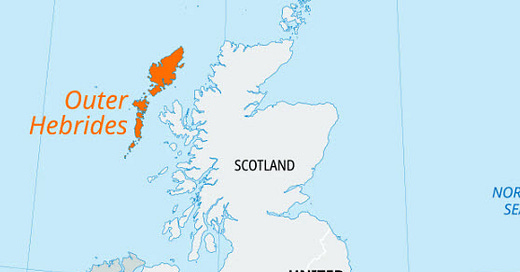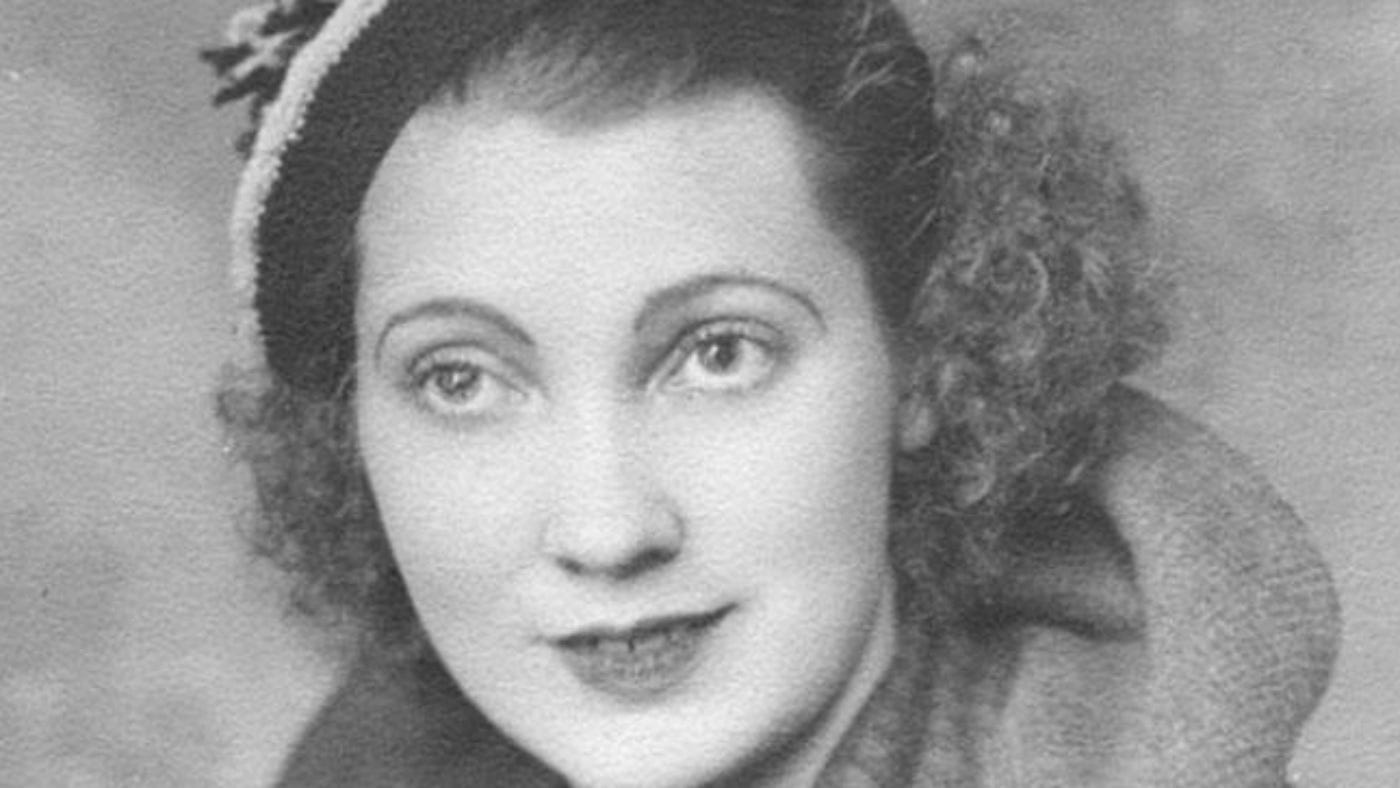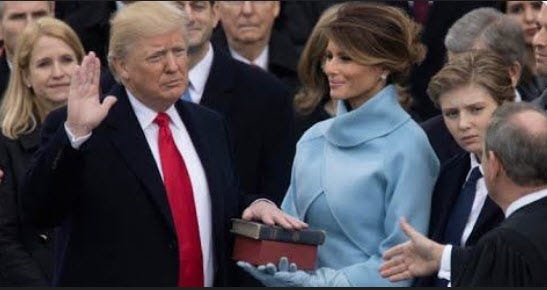Trump's Link to Christian Revival
The Outer Hebrides and Mary Anne MacLeod (Donald Trump's Mother)
The Outer Hebrides are remote islands, about 50 miles off the west coast of Scotland. They’re so remote you can still find people there who speak Gaelic and even conduct some of their worship services singing in that ancient language. Over 100 small islands are located in this desolate, cold, and windswept region, of which about 15 are inhabited, that is populated by small villages.
Donald Trump’s mother, Mary Anne Smith MacLeod, grew up on the Isle of Lewis in the Outer Hebrides. A native speaker of Gaelic who also spoke English as a second language, Mary Anne saw that there was not much of a future for her in the Outer Hebrides once the 1929 depression hit. Just 17 years of age, Mary Anne emigrated all by herself to the United States in 1930, where she worked as a domestic servant for about four years before she met the dynamic and soon-to-be-wealthy Fred Trump.
Over the years, Mary Anne Trump kept in touch with her old hometown and her many relatives. She corresponded often with her two aunts, Peggy and Christine Smith. In the 1940s, Peggy and Christine had grown so aged and infirm that they could not manage to go to their Presbyterian church any more, but the people of the church often came to them. Peggy and Christine Smith prayed very earnestly for years for a Christian revival. Friends and relatives would stop by their home, joining them in their frequent prayer meetings asking God to send revival to the Isle of Lewis.
Revival refers to a movement in which large numbers of people convert to Christianity or rededicate themselves to a faith gone cold. Church memberships swell and communities change. Miracles are observed by the faithful. Christians see these things as inspired by the Holy Spirit. Whether or not you see revival that way is a matter of religious persuasion, but revivals have happened periodically throughout history and are otherwise hard to explain.
If you were to look at a map of the United Kingdom showing the Outer Hebrides islands, you’d think it would take an act of God to bring revival to such a lonesome and inhospitable region.
It was during the 1940s that an evangelist named Duncan Campbell was touring Scotland and preaching in Edinburgh and other large cities. Peggy and Christine persuaded their pastor to invite Campbell to preach on the Isle of Lewis but at first, Campbell refused. Peggy and Christine did not give up. They got the pastor to invite him again, and he declined again. It was only after the third invitation that Campbell finally relented and traveled to the Isle of Lewis where he went from village to village, even house to house, preaching the Gospel. Duncan Campbell was a tireless and seasoned evangelist and his efforts on this little island outpost started to bear fruit. More and more people converted to Christianity and started coming to church. All of this happened in the span from 1949 to 1952 and became known as the Lewis Awakening.
Mary Anne MacLeod was already Mary Anne Trump (often just known as Mary Trump) and living a luxurious life in New York City when this happened, but she heard about it from her Aunt Peggy and her Aunt Christine. As you can see, Mary Trump was a pretty and stylish woman with very fashion-forward eyebrows.
One of the people who became a Christian in Lewis Awakening was Mary Anne’s cousin, a teenager named Donald Smith, who despite his youth became the right-hand man and go-to guy for the pastor of the local church. Donald Smith sometimes led prayer at the church. Young Donald was one of those teenagers who always seemed to be right in the middle of the action—and this time the action was revival.
Aunts Peggy and Christine often wrote to their niece Mary in New York to share the good news about the Gospel spreading like wildfire in the Isle of Lewis. They wrote about Donald Smith’s role in this.
No doubt, Mary Anne told her aunts and other family members in Scotland about her new life in the Big Apple. One day, Aunt Peggy and Aunt Christine sent young Mrs. Trump a gift. It was a small-format, modest-looking Bible that had been part of the revival movement in the Isle of Lewis. Mary Anne treasured it and it became known as the Hebrides Revival Bible.
Mary Anne Trump was so moved by this gift and stories of miraculous events and conversions from her hometown that she named her third child and second son Donald after Donald Smith, the teenager who helped the pastor when the revival broke out.
Donald John Trump, the future president, was born in 1946. The Hebrides revival itself is generally thought to have occurred from 1949 to 1953 but it had its genesis in the prayer meetings of the early 1940s. Donald J. Trump was named for Donald Smith, the boy-wonder who did everything he could to facilitate revival in the Hebrides.
Mary Anne Trump gave the Hebrides Revival Bible to her son Donald in 1955 when he graduated from Sunday Church Primary School at the First Presbyterian Church in Jamaica, New York. She inscribed the Bible in her own hand to her son. He took the oath of office in 2021 using that Bible and displayed it afterward in the White House.
It’s hard to find a good image of the Hebrides Revival Bible because the mainstream media is singularly disinterested in it. But you can see it here—it’s the top Bible on which Trump’s left hand is resting. It is rather unsettling, but the only media coverage I could find on the Hebrides Revival Bible itself (not the revival overall but this specific Bible) came from the Japanese media. American media just doesn’t care much about Bibles or Christian revivals. (The exception to that was when Trump sold Bibles—then the media couldn’t cover it enough as some sort of scam. They said he was unworthy to sell Bibles, just as some in the media have said he was unworthy to even hold a Bible in his hands.) The American media is interested in Trump’s Bibles as long as they can use them to skewer him. The Japanese media, on the other hand, points out rather dispassionately that the Bible is proof of a Trump family connection to a revival movement in Scotland.
Nevertheless, it is a little bit astonishing to think that a book with a provenance linking it to the Hebrides Revival would be in Trump’s possession now. In his first term of office, the Hebrides Revival Bible was proudly displayed in the Oval Office. With many Americans fervently praying for revival in the United States, Trump is the only known political figure to own a Bible with a direct connection (and a familial link) to a prior revival. Whether or not this is a sign, the fact is that Donald Trump’s family has a historical tie to the Hebrides Revival along with a Bible from that movement. In fact, Donald Trump’s two great-aunts are sometimes given “credit” (if that is the right word) for leading the years of prayer that preceded the event.
Donald Trump’s mother, Mary Trump, was Presbyterian and Trump had been a member of the Presbyterian Church until 2020, when he changed his religious affiliation. As President, he stated publicly in 2020 that his faith had changed from Presbyterian to Christian non-denominational. Trump is only the second president to change his religious affiliation while in office. The other one was Dwight Eisenhower who changed from Jehovah’s Witness to Presbyterian.
Like many Americans, Trump has at various times attended various churches of different denominations. Trump has been known to attend Reformed Churches and an Episcopal Church. His movement away from these mainline denominations may be part of bigger trend nationwide as more and more Americans transition away from the big denominations to nondenominational faith. This practice, known to social scientists as “switching” is thought to indicate a serious commitment to faith rather than a whimsical decision. That is, those with weak or more lackadaisical beliefs tend to stay in the home church or drift away from church altogether, but migrating from one church to a new church usually signals some sort of spiritual change.






